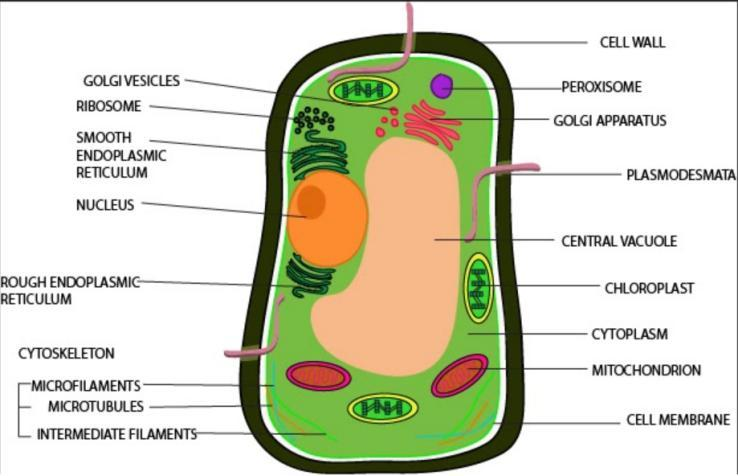
Draw a neat diagram of plant cells and label any three parts which differentiate it from animal cells.
Answer
492.9k+ views
Hint: Plant cells are the primary and functional unit of plants. It is of different shapes, fit as a fiddle and bigger in size than an animal cell. Plants are autotrophic while animals are heterotrophic.
Complete step by step answer:

The diagram is of a plant cell and the primary parts which makes a plant cell unique in relation to animal cell are:
1) Chloroplast: Chloroplast contains chlorophyll and the interaction of photosynthesis takes place inside them.
2) Vacuole: Vacuole is a space inside the cytoplasm of a cell which contains liquid. It is encased by a membrane. It is encircled by tonoplast and the primary capacity is Storage and upkeep of the cell.
3) Cell Wall: The peripheral layer of cells in plants, microscopic organisms, growths, and numerous green growths that offers shape to the phone and shields it from disease is called a cell divider. It is made up generally of cellulose. It is the peripheral layer composed of proteins, cellulose, and polysaccharides. The primary capacity is to secure the cell and to offer underlying help to the cell. It additionally directs the development of atoms all through the cell.
Note:
Plant cell is rectangular with an enormous vacuole possessing $30\%$ of the cell. volume. It is limited by a cell divider and cell layer which is inward to the cell divider It has a core conveying the hereditary material and cell organelles, for example, mitochondria, lysosomes, ribosomes, Golgi apparatus, and so on with fluctuated capacities.
Complete step by step answer:

The diagram is of a plant cell and the primary parts which makes a plant cell unique in relation to animal cell are:
1) Chloroplast: Chloroplast contains chlorophyll and the interaction of photosynthesis takes place inside them.
2) Vacuole: Vacuole is a space inside the cytoplasm of a cell which contains liquid. It is encased by a membrane. It is encircled by tonoplast and the primary capacity is Storage and upkeep of the cell.
3) Cell Wall: The peripheral layer of cells in plants, microscopic organisms, growths, and numerous green growths that offers shape to the phone and shields it from disease is called a cell divider. It is made up generally of cellulose. It is the peripheral layer composed of proteins, cellulose, and polysaccharides. The primary capacity is to secure the cell and to offer underlying help to the cell. It additionally directs the development of atoms all through the cell.
Note:
Plant cell is rectangular with an enormous vacuole possessing $30\%$ of the cell. volume. It is limited by a cell divider and cell layer which is inward to the cell divider It has a core conveying the hereditary material and cell organelles, for example, mitochondria, lysosomes, ribosomes, Golgi apparatus, and so on with fluctuated capacities.
Recently Updated Pages
Why are manures considered better than fertilizers class 11 biology CBSE

Find the coordinates of the midpoint of the line segment class 11 maths CBSE

Distinguish between static friction limiting friction class 11 physics CBSE

The Chairman of the constituent Assembly was A Jawaharlal class 11 social science CBSE

The first National Commission on Labour NCL submitted class 11 social science CBSE

Number of all subshell of n + l 7 is A 4 B 5 C 6 D class 11 chemistry CBSE

Trending doubts
Differentiate between an exothermic and an endothermic class 11 chemistry CBSE

10 examples of friction in our daily life

One Metric ton is equal to kg A 10000 B 1000 C 100 class 11 physics CBSE

Difference Between Prokaryotic Cells and Eukaryotic Cells

1 Quintal is equal to a 110 kg b 10 kg c 100kg d 1000 class 11 physics CBSE

State the laws of reflection of light




